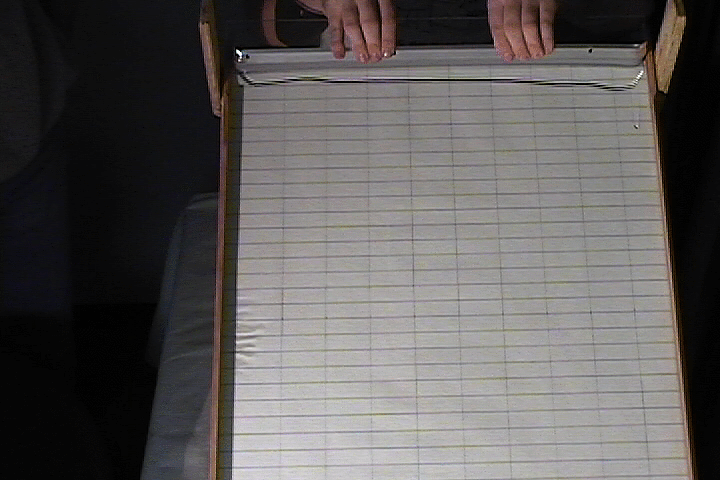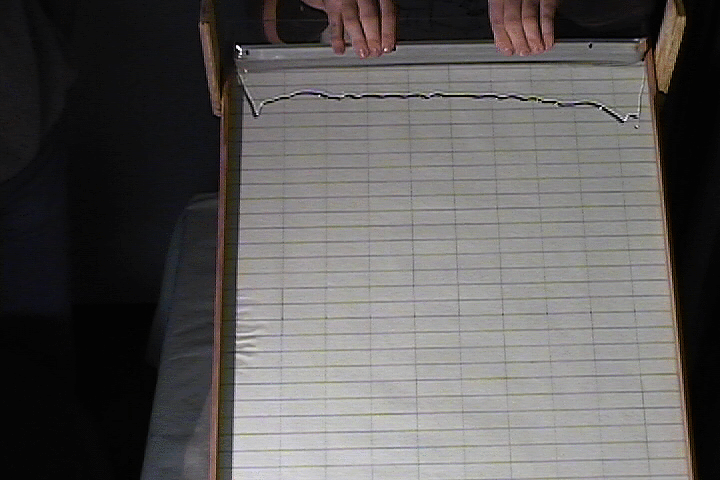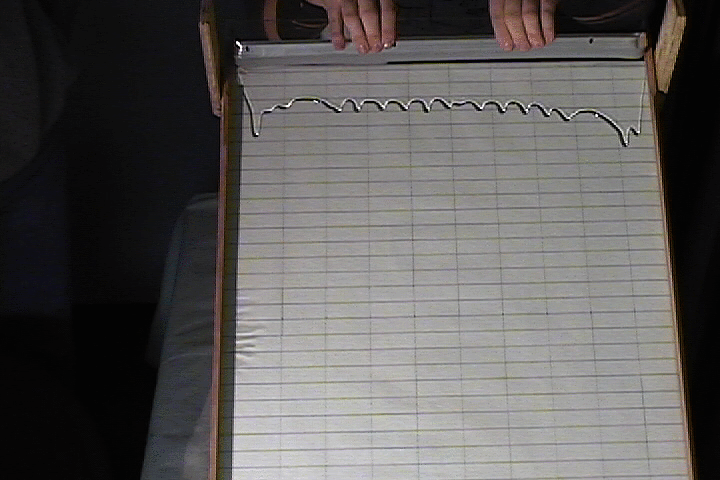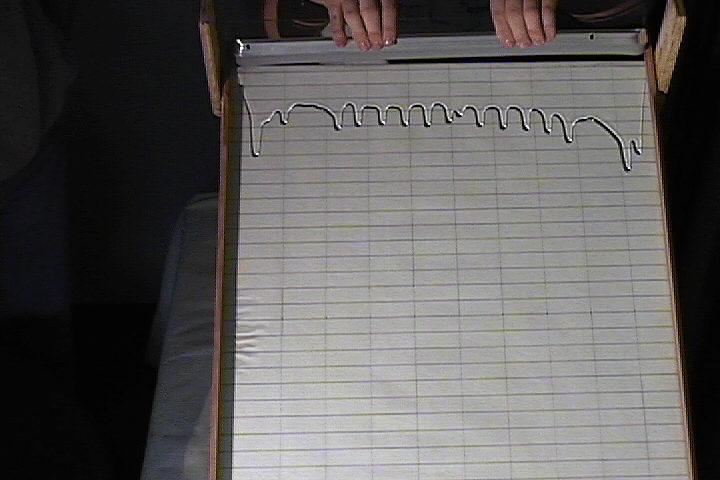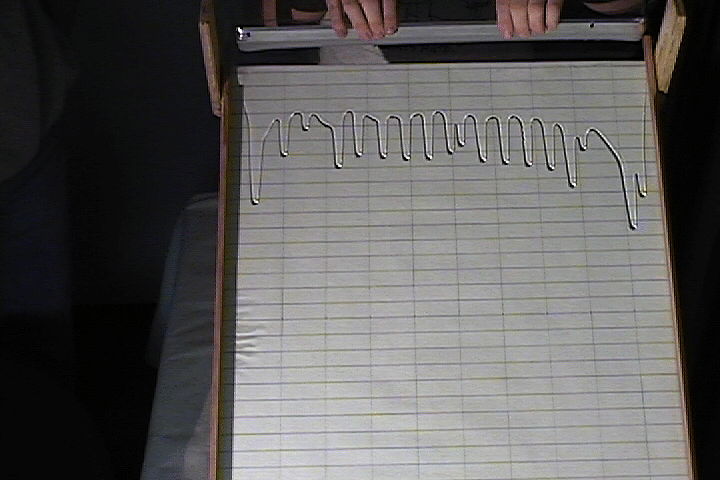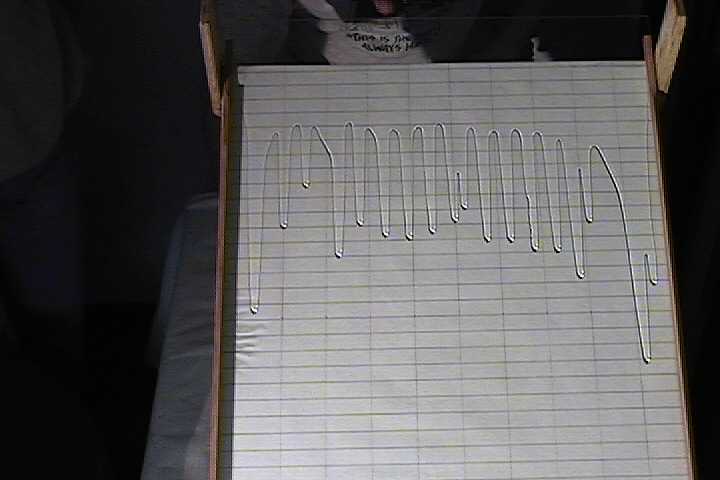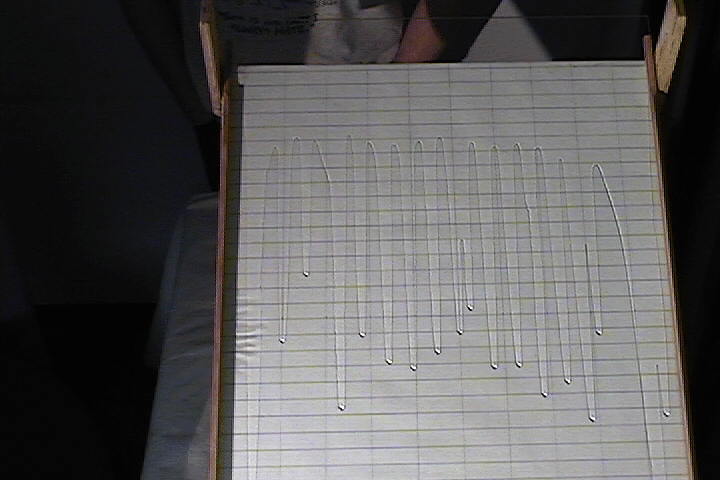
Capstone (Math 451H) Spring 2001:
Pattern formation in thin liquid film flows
Then a viscous fluid is released, the fluid front becomes unstable and forms fingers or triangles, depending on inclination angle. This kind of instability is relevant in many technological applications involving coating, such as microchip production. Theoretical modeling of this flow involves lubrication approximation to reduce Navier-Stokes equations to a single diffusion-like fourth order equation for the liquid thickness.
In the class project, one group of students was responsible for theoretical publications, performing the experiments and recording the results on a digital video camera. A second group focused on modeling and numerical simulation of the fluid flow. A third and fourth group were responsible for data extraction from the video, and their comparison with the theoretical predictions. The students results were presented in a Special Applied Math Seminar on May 4th, 2001 (see below). This project inspired future summer research project with one of the involved students (Rafal Turek), and a teaching/research publication in SIAM Review, available here.
Animation of the experimental results: flow of silicon oil down an inclined plane Avi )
Photos from final presentation (see below for example of experimental results)



Snapshots of the developing instability: silicon oil, inclination 30 degrees
